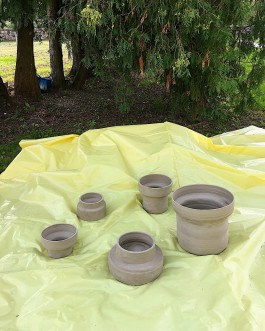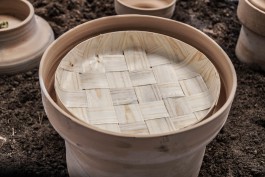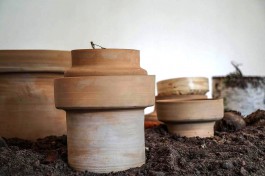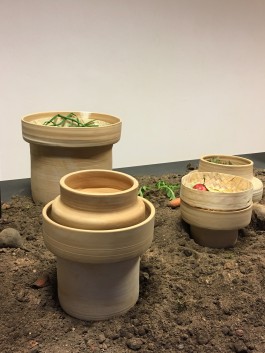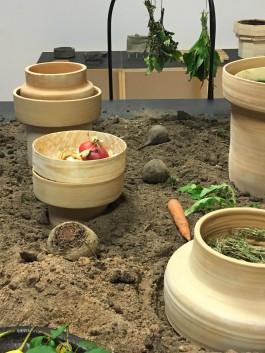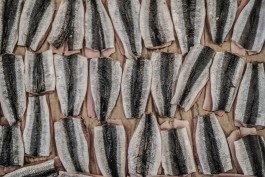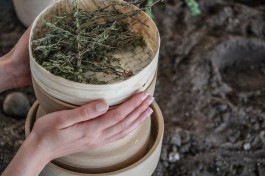Preservation Of Food
Looking back at the history of food preservation, many inspiring methods for keeping the natural nutrients, freshness and flavours of food can be found. But how can food be brought to our tables in an efficient, sustainable and healthy way? By analyzing living organisms as well as traditional methods and talking to eco–farmers we translated our exploration in a system of vessels that complement each other.
Through experimentation with different bio–materials such as anti–microbial moss, birch and clay we developed a variable and stackable system through the shape of the lids that helps food processing. The vessels preserve and process food in a natural and resourceful way and limit food waste. Therefore certain environments for different methods such as storing, fermenting and pickling, drying, steaming and composting are created and combined.
Raw Stoneware, different glazes
Started as a project at MAD Summer School, Latvia
☺ 2018
Ongoing project
↓
Fragments out of Foundations of Flavor,
The Noma Guide to Fermentation
by René Redzepi & David Zilber
»Fermentation is (...) being responsible for life and watching it grow. It’s a slow and patient process.« David Zilber
»At the most basic level, fermentation is the transformation of food by microorganisms–whether bacteria, yeasts, or mold. To be slightly more specific, it is the transformation of food through enzymes produced by those microorganisms. And finally, in the strictest scientific definition, fermentation is the process by which a microorganism converts sugar into another substance in the absence of oxygen.« David Zilber
»There are thousands of products of fermentation, from beer and wine to cheese to kimchi to soy sauce. They're all dramatically different creations, of course, but they're unified by the same basic process. Microbes–bacteria, molds, yeasts, or a combination thereof–break down or convert the molecules in food, producing new flavors as a result. Take lacto–fermented pickles, for instance, where bacteria consume sugar and generate lactic acid, souring the vegetables and brine in which they sit, simultaneously preserving them and rendering them more delicious. Cascades of secondary reactions contribute layers of flavors and aromas that didn't exist in the original, unfermented product. The best ferments still retain much of their original character, whether that's a touch of residual sweetness in a carrot vinegar or the floral perfume of wild roses in a rose kombucha, while simultaneously being transformed into something entirely new.«
